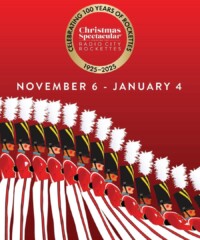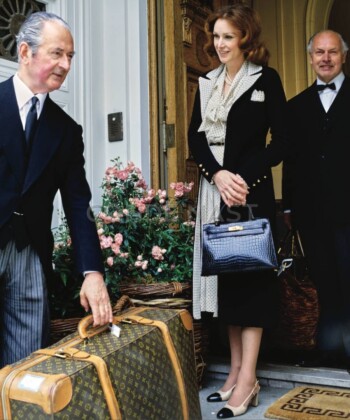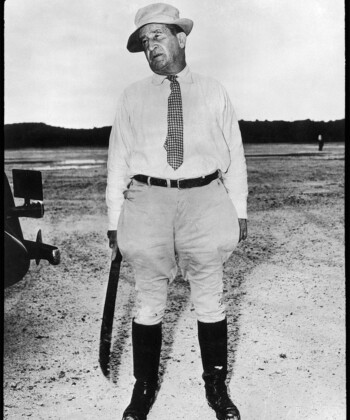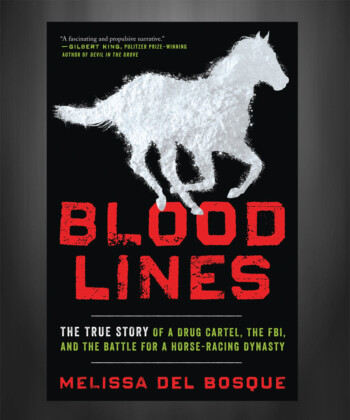Barton flew back to California. There the next breakthrough came: A woman forensics expert identified the murder weapon as a Spanish-made Star PD .45-caliber pistol. According to Barton’s former partner, detective Fred Donnell, “It surprised me that there was only one manufacturer at that time that manufactured the right-to-left or left-to-right twist. All the others were the other way, so that narrowed down to what brand or model the gun was.” (When a bullet is fired from a handgun it spins either right or left. The spin creates marks on the recovered bullet that establishes what spin is being used.) With the bullets and shell casings in hand, the expert was also able to establish that the bullets were .45-caliber hollow point CCI Speer ammunition.
On October 26, 1978, Curtis Hutton died in Santa Barbara at the age of 77. Within months, Edward Hutton and Sophia Merrill split the Barbara Hutton trust, which had grown to $1.3 million. They also inherited trust money from their mother’s side of the family that could not be altered by any will codicil. It was money from the same trust that was funded by the Pacific Northwest lumber empire of Frederic Talbot. A recent trust statement of Edward Hutton’s indicates that he still receives approximately $96,000 a year from his mother’s family’s trust.
Detective Barton also received an important phone call from David St. John, who admitted he had not been completely candid when they interviewed him in Houston. St. John now said he was absolutely sure the weapon that Garrido had purchased for Christensen was a .45-caliber handgun and the place he bought it was the Bellaire gun shop just outside of Houston.
The case was hurtling toward arrests, police believed. The Houston authorities spoke with the gun-shop owner and confirmed Garrido’s purchase. There was a receipt of sale. To complete the case in Palm Springs, the receipt would have to be obtained and the shop owner interviewed.
But in the first of several serious setbacks to the case, Barton’s superior officer said he had spent too much of the county’s money already and refused to allow him to return to Houston. He was told to ask one of his superior officer’s FBI golfing buddies to pick up the receipt. It took the FBI two months to get the document.
A couple of months later, there was another significant death.
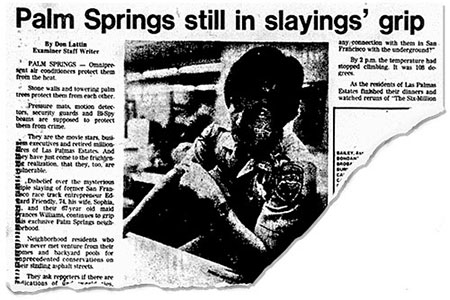
A friend of Edward Hutton’s who lived on Manhattan’s Upper East Side named Enid Jones-McSherry remembers that in February 1979, she received a call from the Houston police asking to speak to Edward. He was indeed staying with Enid and her late husband, Jack, and she handed him the phone.
The police had news: David St. John had been found dead in the bathtub of Edward Hutton’s Houston apartment. When told the news over the phone, Hutton “did not seem concerned,” said Enid Jones McSherry.
(In the second e-mail to the author, Hutton says that when David St. John died, “I was in London with my children,” and St. John was staying in the Houston apartment “so it couldn’t be robbed.”)
Barton said, “Houston detective Johnny Donovan calls me all heartbroken and apologetic. St. John had been found dead in Hutton’s apartment over the weekend and the uniforms treated it as just an overdose. They had not checked about his being a potential witness in a murder investigation. It was hard to believe that this strong, healthy kid would die from a combination of booze and cocaine in Hutton’s apartment.”
Incredibly, Garrido, the headwaiter, died not long after St. John. The young man who told police he purchased a .45 pistol for Christensen was gunned down by a hitchhiker he picked up on a drive to Arkansas. The murderer was caught and given a 50-year sentence.
And so, a year after the murders of Ed and Sophia Friendly and Frances Williams, when the family and press were impatiently awaiting arrests, there were none. Riverside County prosecutors did not lodge charges. The key witnesses to the gun purchase were both dead. There was no murder weapon in the possession of the police. Christensen had disappeared.
But on June 19, 1981, Detective Fred Donnell received a phone call that changed everything. It was from Interpol. Danish police just arrested an Alfred Borg in a bank robbery. But that wasn’t the man’s real name. It was Andreas Christensen.
Denmark is ahead of the curve in environmental protection. In 1981 it was a violation to leave a car motor on and let it idle for more than five minutes. And so a passerby called police to report a car sitting outside a bank in a Copenhagen suburb with its motor on, a woman standing next to it. The responding officer caught Christensen as he emerged from the bank. He and the woman, a native of Zimbabwe, were charged with robbery.
Detectives Barton and Donnell flew to Copenhagen to interview Christensen. He spoke freely for two days, appearing very relaxed and sure of himself. “He mouthed off to me a few times as though he were a tough guy, but I would not let him get away with that,” Barton said. Amazingly, Christensen admitted to having the gun in Houston and to visiting Curtis Hutton in Santa Barbara with his friend Edward. He said he no longer had the gun because he broke it down and threw the pieces from a moving train in Austria. Christensen also admitted to being in Los Angeles two days before the murders, ostensibly for some import-export business. He said it was possible that he was in Palm Springs on October 12, 1978, and that he had gone there to see a young woman—the daughter of actor Robert Stack. (Stack and his daughter denied meeting Christensen.)
But as with the interviews of Hutton, cooperation abruptly stopped. The next time detectives tried to speak to Christensen, he refused. There was to be no jailhouse confession.
Independent investigation revealed hair-raising details about Christensen. He had spent the last few years in Zimbabwe as a mercenary. Barton flew back to the U.S., but Donnell pressed on to South Africa. According to reports in the San Francisco Chronicle, a former girlfriend led the police officer to a cave that Christensen used. There they found hand grenades, explosive mines, weapons and, most importantly, CCI Speer .45-caliber ammunition. The ex-girlfriend remembered Christensen writing letters to someone in Houston—she did not know the name—demanding payment of $150,000.
When detectives and prosecutors regrouped in Palm Springs, they decided to prosecute both Edward Hutton (remarried and still living in Texas) and Andreas Christensen. The Danish court went ahead and formally charged Christensen with the three murders in California. Christensen applied to become a Danish citizen again because the country would not allow the extradition of an accused person to a country that carried the death penalty.
But then there was a change of course. Despite nearly three years of work by the detectives as well as the help of the Danish, English and Zimbabwean authorities, the prosecutor’s office pulled the plug on the investigation. The suspected reason: money problems in Riverside County. Tiny Palm Springs is wealthy, but vast Riverside Country is not. The fourth most populous county in California, Riverside stretches from Orange County to the Arizona border. “It’s blue collar,” says a police officer. Budgets are strained. Sources say that the authorities feared a multiple-defendant first-degree murder trial involving extradition from a foreign country would bankrupt the county. In 1971 the Manson Family murder trial, which involved multiple homicides and multiple defendants, cost the state of California nearly $1 million. And it could not be denied that the Friendly murder case had weaknesses: no witnesses, no weapon, no confessions and circumstantial evidence.
Furious, the Danish dropped their murder charges and Andreas Christensen was prosecuted only for bank robbery. The Palm Springs case lay dormant. Murders do not have a statute of limitation and remain categorized as open. After serving several years, Christensen was released and lived in Denmark, keeping a low profile. Edward Hutton left the United States in the mid-1980s and took up residence in Brazil. If the Palm Springs case ever progressed to arrests, there needed to be two extraditions from foreign countries.
The inability to make arrests in the Palm Springs murders haunt the police who spent years investigating it, including Fred Donnell. “I was working Monday through Friday, and then on Saturday and Sunday I was still working on it. I’d bring stuff home,” says Donnell. “I’ll take it to my grave.”
In 1986, Hutton’s teenage son, Teddy, committed suicide. Hutton did not help pay for the funeral, says Caroline Hutton, who has waged legal battles seeking child support for years. In 2006, Edward Hutton, as part of the disputes, wrote a Connecticut judge a letter saying, “I am presently 67 years of age, retired and living in Mexico.” He is deeply estranged from Virginia, who sent him an anguished letter, “Do you recall the time that Teddy and I did not see you for four years? We called you and called you and said we wanted to see you; you made lame excuses… You know nothing about me. How tall am I now? Who are my friends?”
The Friendly family could not heal, either. Tony Friendly, the son of Ed Friendly, told the San Francisco Chronicle in 1995, “There’s not a day that I haven’t thought about this. My father and I were at odds when he died—we were on bad terms. So when he suddenly died it was an open-ended thing… I think that if he had lived, there would have been a reconciliation. We would have resolved our problems.”
The Palm Springs murders haunt not only family and police but also journalists. In 2006, former San Francisco Chronicle reporter Michael Taylor, who has written the most in-depth stories of the murders, contacted the newly elected district attorney of Riverside Country, Rod Pacheco. He suggested the DA’s office reopen the case. Pacheco, after getting up to speed, assigned it to assistant district attorney Bill Mitchell, considered one of the best homicide prosecutors in California. Mitchell says now, “Under California law, it is easy to file charges against someone in a case, but for old cases, unless the DA can produce new evidence that was not available years ago, the defense can have the case thrown out. We did not want that to happen here.”
Pacheco assigned the Friendly murders to veteran Riverside investigator Richard Twiss. Remarkably, Twiss was able to come up with a tantalizing potential new source of evidence linking the murderer to the 1978 crimes. Dr. John W. Bond, a British chemistry professor, created a procedure for lifting prints off metal objects. “When someone loads bullets into a gun, very often the sweat on the fingers is transferred to the bullet,” explains Dr. Bond. “When the gun is fired, the heat from the explosion etches the print like a tattoo on the shell casing.”
Hoping that the shell casings found on the floor of the Palm Springs house could undergo these tests, police sent them to Dr. Bond. Success. “I was able to lift a number of good prints,” he confirms, “but they are believed to be primarily the sides of someone’s fingertips,” an area not usually captured. Authorities have Christensen’s prints, but they need to do a new and thorough, side-to-side inking to determine a match.
A critical piece of evidence on who murdered Sophia and Ed Friendly and Frances Williams—the sort of evidence that brings indictments—was literally at hand. Authorities had information that Christensen lived outside Copenhagen under an alias. Informal efforts were made to try to acquire new prints, but no formal request was ever made by the Riverside County authorities to the Danish government.
In 2010, Pacheco lost the election to become district attorney and the new DA, Paul Zellerbach, reportedly fired Mitchell and took Twiss off the case. Momentum has been lost again. Zellerbach’s spokesperson, John Hall, refuses to say whether the county’s fiscal problems were the reason for nothing being accomplished. In the latest phone call, Hall said, “At this time the case remains open. There is not enough evidence at this point to file any criminal charges. As with any open case, should further information or evidence develop, we would then review that evidence for a possible criminal filing decision.”
In the years since her boss led her out into a hallway to tell her that her father was murdered, Suzanne Friendly has had a full and successful career in television. She retired from Warner Brothers Television a decade ago and works part time. But she is still troubled by the lack of answers. “I cannot believe that after all these years the two men suspected of murdering my father and stepmother have never been brought into a court to face the charges,” she says. “Where is the justice?”
Caroline Hutton, who now lives in Connecticut, wrote a letter to California Governor Jerry Brown in the spring of this year: “Sophia Friendly was my mother-in-law, and I represent her granddaughter, Virginia Hutton, who wrote several letters in February to various agencies but has received no replies. I think the family deserves an explanation for why this case has been dropped—if it has. And if it has not, where it stands now.” California’s deputy attorney general, Sabrina Y. Lanerwin, replied in a letter that “California law gives discretionary authority to a locally elected prosecutor in filing criminal charges. The decision … calls for consideration of the prospects of obtaining a conviction against a particular defendant.”
But perhaps the most haunting letter of all was sent in December of 1976, two years before the murders on Camino Del Sur in Palm Springs. It was written to Edward Hutton by his father, Curtis Hutton, the man whose long-ago kindness to a motherless little rich girl earned him a $1 million trust fund that, in the end, shattered the lives of so many people.
“Dear Edward:
This is probably one of the hardest letters I have ever had to write to you. You, as my son, I love very much but as a man I cannot say you have amounted to much. Nearly 38 years old and no steady job with certainly no future to look forward to…Take a look at your own life. What have you accomplished in these past years? You have squandered money trying to be and live like a big shot….You must change your ways and improve your standard of living if you expect any inheritance from me. You must demonstrate your ability to be a good father and one that can be relied upon to contribute to the financial welfare of your children.
With love and good luck my son.”
Any reply that Edward Hutton may have made to his father is unknown.



























